The post Scoliosis appeared first on Rehab Experts.
]]>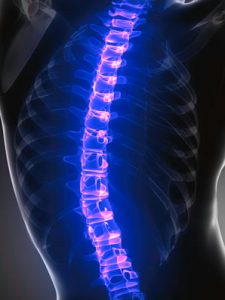
By definition, scoliosis is termed as a twisting and curving of the spine towards a particular side. Curving of the spine towards the left side is called ‘levoscoliosis’, and curving towards the right side is called ‘dextroscoliosis’. This condition can be seen as early between 7-11 years old as child and even as late as 50-60 years old as an adult. To understand the nature and cause of the scoliosis, the patient has to undergo an examination by a trained professional or a doctor who specializes in scoliosis.
After thorough examination of the patient, the doctor or physical therapist assigned to him will now coordinate with the patient to establish a plan of care and goals that both the patient and doctor/therapist would want to achieve.
As a starting treatment, the patient will now undergo Physical Therapy rehabilitation, and whatever the outcome of the examination was, the plan of care will proceed as follows. In scoliosis rehabilitation, we start first at a simple and non-aggressive approach as to not elicit any discomfort or pain. Patients are asked to kneel first, then sit on their heels, bow down and stretch out the arms as far as possible, then the patient starts to walk using their hands only towards the same side of where their spine curves then goes back to initial position. This exercise is then repeated about 5-10 times and in sets of 2-3, after which another exercise is given. Another exercise for a scoliotic patient is that the patient kneels down in front of a wall, facing the wall, with the arms and hands raised up, then the patient slowly sways to the side where the spine curves and holds that position for about 10-15 seconds and goes back to the initial position. The two exercises mentioned above are both basic exercises which can also be done at their homes as a home exercise program. Further into the rehabilitation process of scoliosis are machines that are also used as an adjunct to those exercises above as part of the plan of care.
The next step on the rehabilitation care is to make sure your client is stable, may be it one-leg standing or both feet on the ground. Checking the stability of your patient before progressing helps the therapist establish a better progression for the patient. Stability exercises may involve the patient to be standing with one leg. Further progression of the rehabilitation of scoliosis will eventually involve weights. These weights are used to counter-act the curving of the spine up to a certain degree. High degrees of scoliosis are not recommended for weight training. One example of this weight training is by standing and carry one weighted object like a dumbbell or kettlebell on the side where the curve is hold for about 30-45 seconds, the force generated by the weight will counter-act the curving or to help prevent it from getting much worse. Another progression for a scoliosis based rehabilitation is the use of a swiss ball/ therapeutic ball, this ball will also help counter-act the curve of the spine using the patient’s own body weight. The therapist should be keen and precise when giving instructions when doing swiss ball oriented exercises for these exercises heavily rely on the patient’s stability, that is why these exercises are given at a later part of the rehabilitation process.
The post Scoliosis appeared first on Rehab Experts.
]]>The post Home Instructions For Hip Replacement Patients appeared first on Rehab Experts.
]]>The hip joint is the largest joint found in the human body. It is also called the ball and socket joint which forms the head of the femur or the ball, and the acetabulum or the socket. Many Filipinos undergo hip replacement in their lifetime. Most of our patients who underwent hip replacement belong to ages 60 to 80 and usually reside in Quezon City. They had to have this procedure because of the following reasons: fracture, arthritis, or dislocation, everyone of which cause damage on the hip joint. There are two types of hip replacement: The partial hip repacement which replaces only the head of the femur. Then there is the total hip replacement which replacement the head of the femur together with the acetabulum.
After the surgery, the orthopeodic surgeon has several home instructions for the patient and his family in order to avoid damaging the new hip implant. The physical therapist or physiotherapist in turn provides rehabilitation for the patient in order to make him independent once more in tackling his daily activities.
Don’ts:
- Don’t flex your hip beyond 900. The patient should avoid sitting on low chairs. When he has to use the toilet he has to use an elevated toilet seat. He should also avoid picking up things from the floor.
- Don’t cross your knees. When the patient is about to sleep he has to place a pillow in between his knees.
- Don’t rotate your hip beyond 450. The patient should avoid crossing his leg over the other.
Do’s:
- Keep your affected leg on the front. This is for the healthy leg to support the affected leg when getting up from the bed, or when transferring.
- Strengthening exercises for the surrounding muscles. The patient should strengthen his quadriceps, hamstring, gastrocnemius and the other leg muscles to facilitate the healing process. This will also help the patient recover his capacity to walk faster .
- Cold compress for 20 mins. This help in assuaging the swelling and the pain. The cold compress must not directly touch the skin. Use a towel between the skin and the cold compress.
- The patient should have a regular checkup with his orthopedic surgeon. It is advisable that the surgeon who performed the surgery be the one to monitor the progression of the patient as well. He will be the one who will also prescribe the right medication.
- Have regular physical therapy administered by a certified physical therapist or physiotherapist. He will guide the patient in performing the proper strengthening exercises in avoiding further injury. He will also be the one managing the pain and the swelling arising from the surgery.
The do’s and don’ts mentioned here should only serve as basic guidance. The supervision of medical professionals still remains necessary. If you have underwent a hip replacement surgery, we at Rehab Experts are ready to provide you with physical therapy home service anywhere in Metro Manila, Philippines.
The post Home Instructions For Hip Replacement Patients appeared first on Rehab Experts.
]]>The post Carpal Tunnel Syndrome Home Treatment appeared first on Rehab Experts.
]]>
Carpal tunnel syndrome is a condition of having numbness, tingling sensation, weakness or pain in your hand. This is due to the compression of the median nerve that controls the thumb, index finger, middle finger, and the ring finger in the wrist. The structure of the carpal tunnel becomes swollen as the pressure on the median nerve increases. The people who are most likely candidate for this condition are those who have arthritis, diabetes and hyperthyroidism, people who is required to do repetitive hand movements, and pregnant women because of hormonal changes. Many of our patients with carpal tunnel syndrome are residents of Makati, Pasig and Quezon City.
If you experience symptoms of tunnel carpal syndrome, it is advisable that you consult a specialist like an orthopaedic doctor, so that the condition may be addressed at its early stage. After which you will be refered to a physical therapist for its proper treatment. The following are exercise programs and simple treatments that may be done at home in order to arrest the development of this condition:
- Warm compress. You may apply warm compress on the affected wrist. Place a towel between the warm compress and the skin to avoid getting singed. Apply it for twenty minutes. The warm compress will facilitate vasodilation where the affected area will have increased blood circulation. (Figure 1)
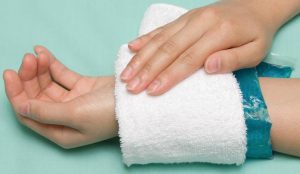
Figure 1 - Stretching of the forearm muscle. Stretch your elbow. Then, pull back on the fingers of the stretched arms (do this, first with your palm facing upward and then, with your palm facing downward). Hold it for twenty seconds. This exercise will provide flexibility on the surrounding muscles.(Figure 2)
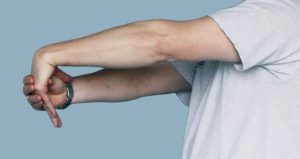
Figure 2 - Strengthening exercise. With the use of a dumbbell or theraband, do the wrist flexion and extension exercise while your forearm is stabilized. This will strengthen the muscles of your forearm.(Figure 3)
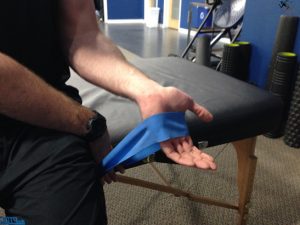
Figure 3 - Wear a splint. You may either order a customized splint and buy a ready-made one. Wear your splint especially when you decide to sleep. The splint will position your arm in a way that it will ease the pressure on the carpal tunnel.(Figure 2)
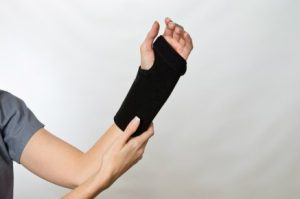
Figure 4
These are basic treatments and exercises that do not guarantee remedy. It is also recommended that these exercises be performed under the supervision of a certified physical therapist to be sure that they are performed properly. We at Rehab Experts provided quality physical therapy home service throughout Metro Manila, Philippines.
The post Carpal Tunnel Syndrome Home Treatment appeared first on Rehab Experts.
]]>The post Stroke patient recovering from her illness at home. appeared first on Rehab Experts.
]]>This video is about our patient who suffered from stroke. She is 70 years old. On the first meeting with our physical therapist, she was not able to stand on her own. After 2 months of having physical therapy home service in Mandaluyong City, she is now walking indepentdently.
Our physical therapists in Rehab Experts have extensive background at handling and treating stroke patients. We are always here to give you our quality service.
The post Stroke patient recovering from her illness at home. appeared first on Rehab Experts.
]]>The post Can I get back to sport after ACL injury? appeared first on Rehab Experts.
]]>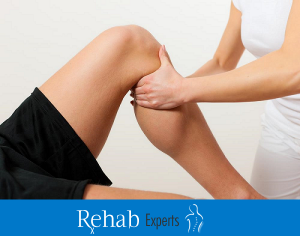
Many among our athletes especially among basketball players develop an anterior cruciate ligament (ACL) injury. Most of the players are worrying about getting back to their sports career after getting this kind of sports injury. Usually player develops an ACL injury when he happens to have a bad fall after a jump. The ACL is one of the four major ligaments in the knees. This is the ligament that connects the thigh bone (femur) with the leg bone (tibia). This is also important for supporting the stability of one’s knees. If this gets torn, the cartilage at one’s knee gets easily worn out which in turn leads to the early development of arthritis.
If the ACL develops a partial tear, this may still be treated by means of physical therapy. The physical therapist will prescribe a regimen of exercises aimed at maintaining the flexibility and strengthening the muscles of the knee. The knee muscles that need to be strengthened are the vastus medialis oblique(VMO), knee flexors, and gastrocnemius. These muscles aid the ACL to stabilize the knee.
Now if the ACL develops a total tear then, this now requires a reconstructive surgery. Through reconstructive surgery the injured ACL will be replaced with a new ACL by getting a graft from other parts of the body. The usual sources patellar tendon and the hamstring of graft. After the surgery, the patient needs to undergo physical therapy or physiotherapy in order to restore the healthy function of the knee.
Our physical therapist or physiotherapist are experts who provide physical therapy or physiotherapy home service to patients with ACL injury in Metro Manila areas comprising Quezon City, Marikina, Pasig, Mandaluyong, San juan, Makati, Taguig, Pasay, Manila, Parańaque at Las Pińas.
In our sports injury rehabilitation program, the patient has to undergo several phases. First phase, we aim at restoring the patient’s normal range of motion. Second phase, we design for the patient a gym program aimed at strengthening and restore the right size of the muscles. Third phase, we provide the patient a running program again aimed at further strengthening the muscles. Fourth, we teach the patient the proper way to jump and to land in order to avoid repeating the same injury in the future. Fifth, we teach the patient plyometric exercises in order to prepare them for his sports. Lastly, when the injury is fully healed, we encourage him to return to his sports.
Our group has succeeded in helping serveral patients restore their knee function after suffering from ACL injury regardless whether he is a player or not. We are here to provide you with the right physical rehabilitation, if your are suffering from ACL injury.
The post Can I get back to sport after ACL injury? appeared first on Rehab Experts.
]]>The post HIP BURSITIS SYMPTOMS, RELIEF AND PHYSICAL THERAPY appeared first on Rehab Experts.
]]>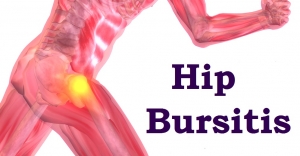
A bursa is a fluid filled sac found in joint and assist in reducing friction in joint capsules. Bursitis therefore is the inflammation of the bursa in joints which can be caused by infections. Common locations for bursitis include elbow, shoulder, hip and knee joints.
Common location for hip bursitis is on the side of the hip whereby a large tendon passes over the bony bump-greater trochanter- on the side of the hip. Inflammation between the trochanter and the tendon is commonly known as trochanteric bursitis a condition commonly in older people and athletes.
Hip bursitis is characterized by pain on the hip over the bump that forms the greater trochanter. As the problem progresses it results in limping and stiffness of the knee joint pain later also gets to one at rest after overtime and later even at sleep.
People with bursitis are in constant taking of pain killers that are strong so as to relieve the pain because of suppression of the nerve at the joint capsule and one should reduce random movements until treatment is given appropriately.
Treatment is by simple treatment measures treatment becomes more involved if simple measures are not efficient. There is surgical treatment and non-surgical treatment.
In younger individuals its can be treated non-surgically through physical therapy and use of anti-inflammatory medications. Improving the muscles of the buttocks (gluteas maximus, minimus and piriformis)will help the femur to move in the socket freely and reduce friction in the join.
When all non-surgical procedures fail the doctor will recommend for surgery. There are several surgical procedures. The procedure involves removal of the thickened bursa to remove the bony spur that have formed on the greater trochanter and to relax the large tendon of the gluteaus maximus. Some surgeons lengthen the tendon others remove the tendon that rubs the greater trochanter
Even if one undergoes surgery or not one has to ensure proper care of the hip. The doctor will advise the patient to go for a physical rehabilitation to stretch and strengthen the hip joint. One should maintain flexibility and balance of the hip to treat the pain. Your physical therapist will give you exercise regimens to hasten the recovery.
Our company offer physical therapy home service for this kind of condition. We have extensive background in providing treatment for people suffering hip bursitis in Metro Manila including Quezon City, Marikina City, Pasig City, Mandaluyong City, San Juan City, Makati City, Taguig City, Pasay City, Manila City and Las Piňas City.
The post HIP BURSITIS SYMPTOMS, RELIEF AND PHYSICAL THERAPY appeared first on Rehab Experts.
]]>